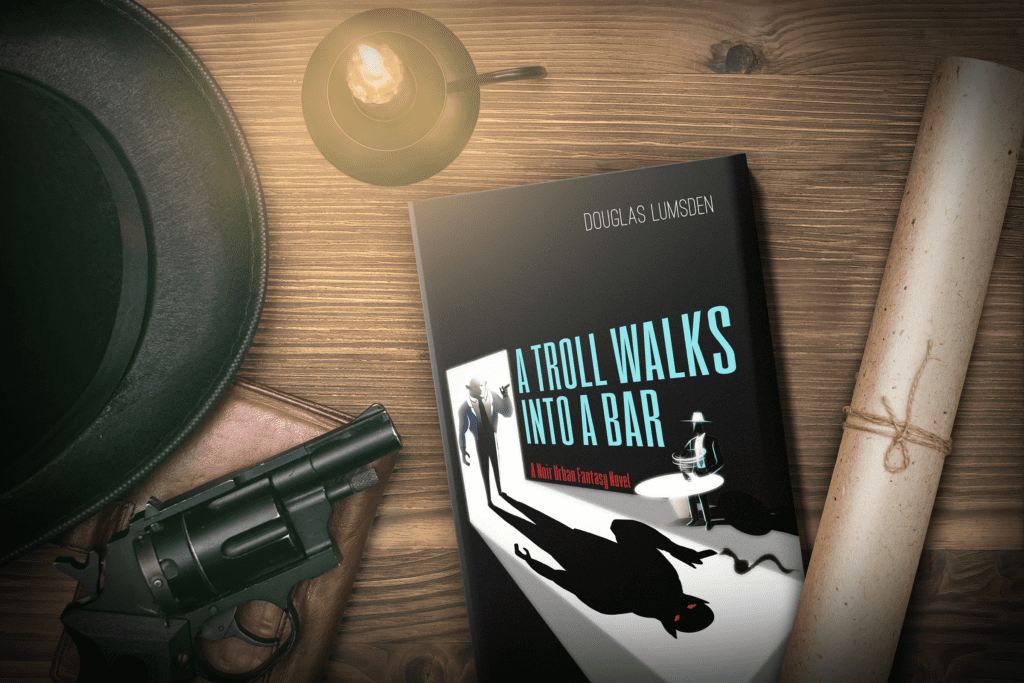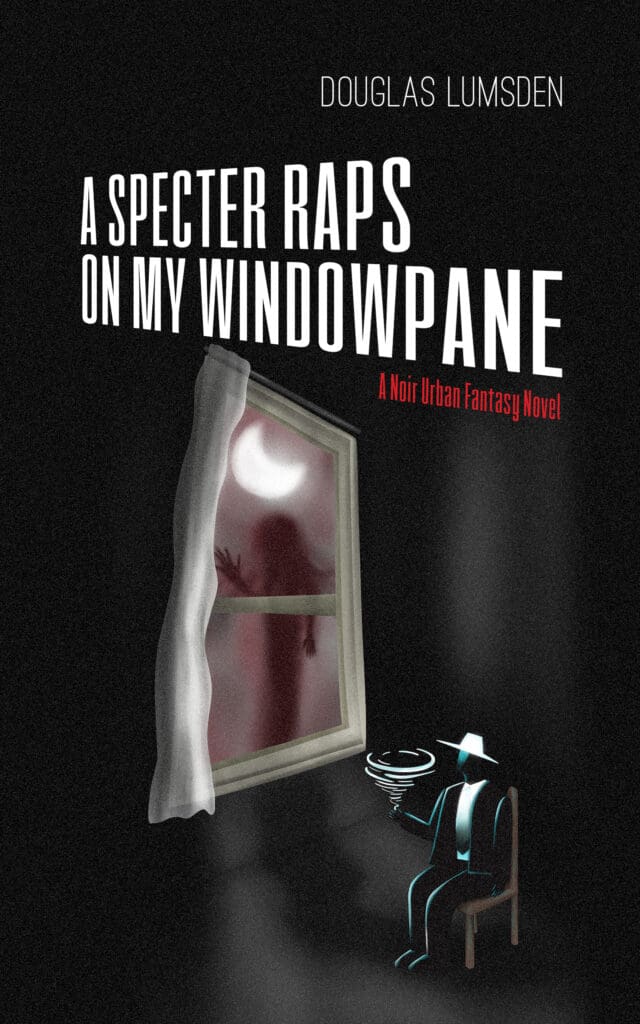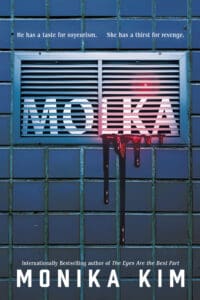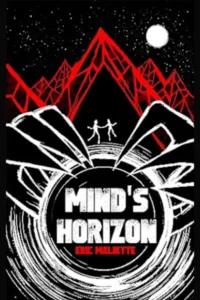
- For those who have yet to pick up your series, what’s the elevator pitch to convince them to pick it up?
Well, the first thing I would do is jam the buttons so that the elevator would stop and I’d have a captive audience, because I like to take my time with my pitches. But if I was in a hurry, I might say something like: A cynical detective finds mystery, murder, and dark magic in the mean streets of Yerba City, as he encounters well-dressed trolls, blackmailing gnomes, and femme fatales from the depths of the sea.
- In your past life you were a history professor. Did that offer any assistance when you began your next career as an author?
Absolutely! History is just a collection of stories we edit, revise, and interpret in order to better understand the capacity and diversity of human thought. Many of these stories are tremendously inspiring. Also, the study of history involves a lot of reading and writing, and teaching it involves critiquing the writing of others. The study of history also gave me a love of researching, which is an essential skill for a writer. And then there’s the idea of controlling historical content as a means of shaping contemporary thought through messaging, which is a great MIS-use of history, but something that governments do all the time. This is the theme of George Orwell’s 1984, and it’s an idea that has found its way into my books.
- What prompted your decision to blend genres and write a Noir / Urban Fantasy Series?
I love noir crime stories, and I love fantasy, so combining them made a lot of sense to me, and they actually combine pretty well. When Alexander Southerland has to deal with Stonehammer, it’s not too different from Philip Marlowe’s encounters with Moose Malloy in Raymond Chandler’s Farewell, My Lovely, or from the Alan Ladd character’s interaction with the William Bendix character in The Glass Key.
Let me tell you how A Troll Walks into a Bar came into existence. I retired from teaching in 2018 and spent the next twelve months reading. Teaching kept me too busy to read for pleasure except for a short period during the summer breaks, so I wanted to make up for lost time. After a year of this, I decided it was time to write my own book, something I’d always wanted to do since I was seven but had been putting off until I had the time. Well, it was now 2019, and I was 67 years old, so I figured I’d been procrastinating long enough. I had a jumble of ideas in my head, and I decided that I would write ten first sentences and see if any of them took me anywhere. So the first sentence I wrote was this long description of a cigar-smoking troll in a pinstripe suit walking into a bar. Then I wrote a short second sentence to cap off the long one. Then the troll spotted the main character, a private detective sitting at a table drinking a beer, and he came over to have a word with him. Next thing I knew, I was writing a hardboiled murder mystery with fantasy creatures and magic in a modern world. I never did get around to writing those other nine first sentences.
Thing is, when I sat down to write first-sentence ideas, I didn’t know I was going to be writing a noir urban fantasy story. I didn’t know what genre I was going to try to tackle. I’d been reading a wide variety of fiction, and I’d long been entertaining the idea of a book about a college student in the 1970s. It was going to be something along the lines of Richard Fariña’s Been Down So Long It Looks Like Up To Me (about a college student in the early 1960s). But that first sentence was about a troll in a bar looking for a private investigator, so that’s what I went with. And I’m glad I did—it’s been fun!
- You draw on a number of Central and South American influences in your books, what drew you to those? Was it an area you had prior knowledge of, or did it require a lot of research?
Troll mostly features your standard European fantasy creatures: trolls, gnomes, elves, dwarfs, dragons, and so forth. But mythological creatures from Europe have been done to death, so when I decided to follow Troll up with a second book, I resolved to draw on the rich folklore of the Western Hemisphere. I had a surface knowledge of Aztec history, having taught it as part of my World History course, and I was fascinated by such Aztec gods as Quetzalcoatl and Huitzilopochtli. Quetzalcoatl had already inspired the name Ketz-Alkwat, the Dragon Lord of Tolanica, who was introduced in Troll, but I was looking for an excuse to draw deeper from that well. So I started doing more research into Aztec folklore, looking for stories of gods, spirits, witches, and fantasy critters. Later, I started in on the Mayans and various Native American communities. It started as a creature hunt, a search for cool monsters, but in the process of researching I learned a lot of cool stuff about these North, Central, and South American historical communities that I hadn’t known before. It’s been quite an education!
- You had a “famous” viral tweet regarding starting your writing journey later in life. For those that aren’t familiar with the message could you share that here? I for one thought it was an important message to those who fear their ship may have sailed.
This was back in July 2021. I’d been on Twitter for two months, and I had 68 followers. My third book had come out a couple of months earlier, and I was just starting to get noticed a little. I was cruising through Twitter one morning, and just as I was about to get off the computer and go start a treadmill workout, I saw a conversation in which a couple of writers were talking about how disappointed they’d been when they hadn’t written a bestselling book by the time they were 30. This struck me as more than a little ridiculous, so I sat back down and wrote the following:
For what it’s worth:
I was 43 when I got a Ph.D.
I was 51 when I started my dream job.
I was 54 when I married the love of my life.
I was 55 when I ran my first marathon.
I was 67 when I self-published my first book.
I turn 70 next year, and I can’t wait!
Then I went off to do my workout. When I was finished, I went to Twitter to see what was going on and found that my post was getting a lot of attention. By the end of the day it had exploded! After two days, it had generated more than 8 million impressions worldwide, more than 550,000 engagements, and more than 200,000 likes. At first, I tried to respond to all the comments, but I had to stop because they were coming in too quickly for me to keep up. Then people started posting screenshots of the post on Instagram, and it blew up even faster there. The Oprah people posted it, and you know what THAT means!
The post still has life, especially on Instagram. Every once in a while I pick up another couple of thousand Instagram followers, and I know that the post is circulating again.
I had no idea that people would be inspired by that post, because I hadn’t realized so many people were stressed about not achieving early success—not just with writing, but with whatever they were after. I’ve never been in a hurry; I’ve always felt like I had plenty of time. I’m 71 now, and I still feel that way. But I’ve learned that a crazy number of people believe that if you haven’t achieved your goals at a ridiculously early age, you may as well give up because it’s never going to happen for you. I mean, I get that some people are fighting against tremendous life-challenging odds, but it’s pretty clear that a great many people are simply giving up on themselves way too early. Anyway, my post struck a chord with a lot of people all over the world, and I’m glad it has inspired some people and proved to be helpful. But please don’t come to me for life-changing advice—trust me, I’m not qualified to be a life coach! I just pointed out that some good things happened to me in my later years, and I know I’m far from the only one who can say this.
- I know you are a huge crime fiction fan, what would be your top 3 recommendations for someone that’s new to the genre?
Oh, man! There’s no way I can stop at three. I mean you’ve got to start with the classics, right? Dashiell Hammett, Raymond Chandler, John D. MacDonald, Donald Westlake, James Cain, Robert B. Parker…. So many others. Among modern crime writers, I really like S.A. Cosby and Gabino Iglesias (who includes some deliciously dark fantasy/horror in his works). Also Chris Offutt, Peter Farris, and Scott Blackburn. Some terrific under-appreciated (so far) crime writers I want to shout out are Craig Terlson, Mark Atley, and Bobby Matthews. For some great transgressive crime stories, check out Stephen J. Golds, Manny Torres, and Nevada McPherson. Martine Proctor writes terrific short stories, and I’m anxiously awaiting the publication of a series she’s started. Finally, for some fabulous tongue-in-cheek noir, look up Whiskey Leavins. I know I’ve forgotten a few, and I hope they’ll forgive me.
- You’re a tremendous supporter of indie authors. Was there anyone that influenced / helped you prior to your own move into getting published?
She doesn’t know me, but I learned how to self-publish by reading advice from Jane Friedman. For anyone looking into the process of self-publishing, you’ll want to Google her.
I wrote A Troll Walks into a Bar because I wanted to see if I could write and publish a book. I figured a few friends and family members might read it, but I had no aspirations beyond that. My wife, Rita, convinced me to open an Instagram account and promote my book on the site. I didn’t see much point in it, but I was willing to give it a try. At some point, my book came to the attention of Assaph Mehr, the author of the terrific Togas, Daggers, and Magic series featuring Felix the Fox, a detective in a fantasy version of the Roman Republic. The way I remember it, I read his book, Murder in Absentia, and wrote him a message on Instagram telling him how much I liked it. Then he read Troll, enjoyed it, and encouraged me to write a sequel. He was my first big supporter from outside my inner circle, and he’s beta read all of my books since. I owe him a LOT! Without Assaph, my writing career would have ended with one book.
- Having read (and very much enjoyed) a number of the books in the series, I’d suggest that they have a hard boiled / gritty realism to them despite the surrounding fantasy elements. Was that deliberate and did any particular books or movies influence you in that respect?
I read a couple of books that combined noir mystery with fantasy: Jonathan Lethem’s Gun with Occasional Music comes to mind. It’s a lot more fantasy oriented than my books are. Roger Zelazny’s Nine Princes of Amber starts out with a noir feel before it dives into fantasy. And, of course, Jim Butcher’s Dresden books were a huge influence. There may have been some others I can’t think of offhand. But the idea of a Spade/Marlowe type of detective dealing with fantasy critters in a contemporary world with openly-performed magic is just something that popped into my head. Some people have compared my work to Glen Cook’s Garrett books—and I’m incredibly flattered by that, because I really liked his Black Company stories—but I hadn’t been aware of his Garrett books until after I’d written my first two books. Since then, I’ve run into a number of wonderful noir urban fantasy books.
- Coming to A Specter Raps on My Windowpane as your 7th book in the series, did you ever imagine it going that far after you wrote A Troll Walks into a Bar (Book1)?
Hahaha! No. Like I said, I figured Troll would be a one-shot deal, and then I’d find some other way of spending my golden years. I have gone into every book I’ve written convinced that it would be the last book in the series. Seven books? No way! I’m amazed that it’s happened, and I’m extremely grateful to everyone—you included—who read my books and encouraged me to keep going. You can’t believe how much I’ve been enjoying the ride!

- The Cover for A Specter Raps on My Windowpane follows the distinctive style from your previous books, can you elaborate on the inspiration behind these?
All my thanks go to Arash Jahani (arashjahani.com) who designed and produced all of my covers for the seven-book Southerland series. I found him through Instagram, and he’s been great to work with. His price has gone up a little since the first book, but he’s still very reasonable. He’s also a thorough professional and extremely patient. I gave him a few ideas—I wanted something dark and bare-bones simple to the point of surrealistic—and he did the rest.
The cover of my novella, The Demon’s Dagger, was designed and produced by Martin Shannon, the author of the terrific and underappreciated Tales of Weird Florida series. He showed me some cover designs he’d been toying around with, and I liked them so much I asked him to do Dagger. I think it came out great!
- What juicy morsels can you share about A Specter Raps on My Windowpane? (without any dreaded spoilers of course)
Southerland gets visited by a (literal) ghost from his past (specifically, from my second book: A Witch Steps into My Office). He gets to meet the heads of the notorious Hatfield crime family up close and personal. An old “friend” shows up in a tinfoil suit begging for protection. We see some of the inner workings of the elf’s secret project, and we discover the project’s immediate goals. We also meet an odd pair of hitmen who I ended up liking quite a lot. Smokey is back, of course. I’ve been warned that if I ever hurt Smokey, I will come to serious harm.
- What comes next for you and the current series?
A Specter Raps on My Windowpane will be the last book in the Alexander Southerland series (as far as I know). Seven books is enough, and I’m leaving the series on a high note. I’ve got a new series planned featuring Benedict Shade, a collector and retriever of dangerous and exotic magical objects. The Shade the Collector series will take place in the same world as the Southerland books, and we may see some crossover from the current series. I’ve got big plans for it, and I’m so jazzed I can hardly contain myself! I’m hoping the first book, tentatively entitled Claws of the Clowder, will appear before the end of the year, although early next year is more likely.
Bonus Question:
You can have a meal with 5 other authors (alive or dead). Who’s joining you and what food / drink is on the menu?
Wow, let’s see… As much as I love the works of Dashiell Hammett and Raymond Chandler, I’m not sure they’d make great dinner companions. A little too dour, if you know what I mean. Joseph Heller, for sure. Catch-22 is my favorite book of ALL TIME, and he seemed like a fun guy. J.R.R. Tolkien? Sure, why not. After all, we both studied medieval history and literature, so we’d have a few things to talk about. Roger Zelazny and Ray Bradbury—absolutely! What tremendously creative minds! One more… hmmm…. I’ve got it—Voltaire! I think we’d all love to see him at the head of the table. The stories he could tell! The menu? Pizza and beer for me, and, since the others are all risen from the dead, maybe some fresh brains for them.
AUTHOR BIO:

Dr. Douglas Lumsden is a former history professor and private school teacher. He is the author of a series of fantastical noir mystery novels featuring hardworking private detective Alexander Southerland, who wanders the mean streets of Yerba City while navigating his way through trolls, witches, otherworldly demons, political corruption, and femme fatales from the depths of the sea.
Dr. Lumsden lives in Monterey, California, USA, with his wife, Rita, and two cats, Cinderella and Prince.
Socials and Book Links:
Twitter – @DouglasLumsden1
Website – https://www.douglaslumsdenauthor.com/
Book Link- https://www.amazon.com/Alexander-Southerland-P.I.-7-book-series/dp/B08G59X63G




I thoroughly enjoy Doug’s books. Can’t wait for his new series.